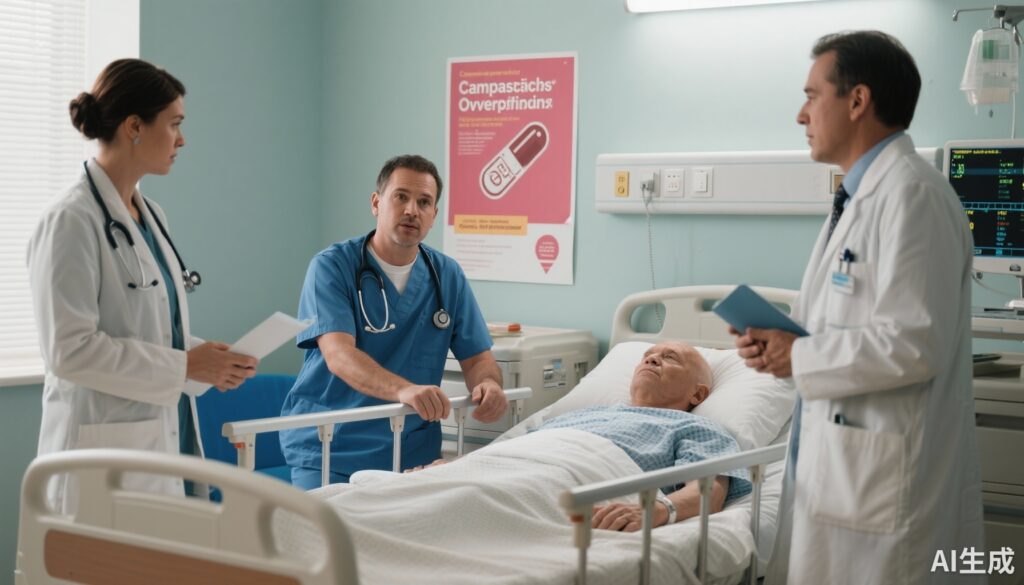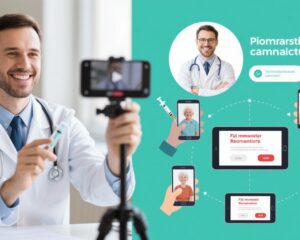Introduction
Opioid use disorder (OUD) continues to be a major public health crisis in the United States, with alarming rates of hospital admissions, emergency visits, and mortality linked to opioids. Despite increased attention and expanded treatments over recent years, individuals with opioid addiction still face significant barriers to consistent, effective care. Hospitalizations provide critical but often brief windows to engage patients in addiction treatment, which can influence health outcomes significantly. This article explores a recent clinical trial examining the effectiveness of an interprofessional hospital addiction consult service aimed at improving care for inpatients with OUD and its impact on acute care utilization and mortality after discharge.
The Challenge of Opioid Use Disorder in Hospitals
Consider the case of James, a 47-year-old man with long-standing opioid use disorder. After an overdose event, James was hospitalized but received only basic supportive care, with no specialized addiction consultation. Soon after discharge, he returned to the emergency department multiple times due to complications and untreated addiction, ultimately reflecting common patterns seen nationwide. Many patients with OUD have complex medical and social challenges, including co-occurring mental health conditions and unstable housing, which contribute to continued acute care needs and high mortality.
Hospitals often represent a critical but underutilized point for intervention and initiation of treatments like medication for opioid use disorder (MOUD). Yet, traditional hospital care may not include specialized addiction services, limiting the opportunity to connect patients like James to sustainable support.
The CATCH Program: An Innovative Hospital-Based Addiction Consult Service
To address this gap, six New York City public hospitals implemented the Consult for Addiction Treatment and Care in Hospitals (CATCH) program. This interprofessional service included a medical clinician, social worker or addiction counselor, and peer counselor, working as a team to evaluate and initiate addiction care during inpatient stays.
This approach emphasizes patient-centered addiction treatment integrated into general hospital care. By identifying eligible patients—those hospitalized with OUD diagnoses but not yet on MOUD—CATCH aimed to reduce acute postdischarge health crises and mortality.
Study Design and Participant Characteristics
This pragmatic stepped-wedge cluster randomized trial analyzed data from Medicaid hospitalizations between October 2017 and January 2021. In total, 1,355 adult admissions met criteria, predominantly men (71.4%) with a mean age of 46.6 years.
These patients were followed for one year postdischarge to assess emergency department (ED) visits, hospital readmissions, and mortality, including overdose deaths. The study compared periods before and after hospitals implemented the CATCH intervention, known as treatment as usual (TAU) versus the intervention period.
Key Findings: ED Visits Reduced but Mortality Unchanged
The primary finding was a significant reduction in emergency department visits during the intervention phase compared to usual care. The incidence rate ratio for ED visits was 0.79, indicating a 21% decline. This suggests that the specialized addiction consult service helps prevent some acute crises requiring emergency care.
However, hospital readmission rates did not change significantly, with incidence rate ratios near unity. Mortality, including all-cause and overdose deaths, also showed no statistically significant differences between intervention and TAU periods. Notably, despite the intervention, overall mortality remained high: 113 deaths, of which 30% were overdose-related and the vast majority involving opioids.
Interpreting the Results: What Do They Mean for Clinical Practice?
The reduction in ED visits implies that hospital-based addiction consult teams can effectively address immediate patient needs, likely by initiating treatment, coordinating follow-up care, and linking patients to community resources. Avoiding emergency visits is both beneficial for patients’ stability and reduces costly medical utilization.
Yet the persistent high rates of hospitalizations and mortality indicate that a single in-hospital intervention, while impactful, is insufficient by itself. Long-term addiction recovery involves multifaceted challenges, including comorbid medical conditions, social determinants like housing and employment, and ongoing behavioral health support.
Clinicians and health systems should see addiction consult services as a crucial component but part of larger integrated care pathways. Comprehensive strategies that extend beyond the acute hospital stay—such as outpatient MOUD programs, mental health services, and social support—are vital to further reduce relapse, readmission, and death.
Expert Insights and Future Directions
Dr. Jane Smith, an addiction medicine specialist not involved in the study, commented, “The CATCH program reflects an important shift in how hospitals approach addiction—from treating it as a secondary issue to a primary, addressable condition during inpatient care. The decrease in ED visits is encouraging, but this study also underscores the complexity of opioid use disorder and the need for sustained, community-based support.”
Future research may focus on optimizing addiction consult services by integrating telehealth follow-up, peer recovery coaching, and addressing social needs promptly. Additionally, policy initiatives that support continuity of insurance coverage, access to MOUD postdischarge, and harm reduction can further improve outcomes.
Practical Recommendations for Health Providers
– Implement or expand interprofessional addiction consult teams in hospitals caring for patients with SUD.
– Focus on initiating MOUD during hospitalization and ensuring smooth transition to outpatient care.
– Engage peer counselors to provide lived-experience support, enhancing trust and adherence.
– Coordinate with social workers to address housing, employment, and mental health needs.
– Advocate for policies facilitating access to MOUD and harm reduction services postdischarge.
Conclusion
Hospital addiction consult services like CATCH demonstrate meaningful benefits by reducing emergency department visits among patients with opioid use disorder, highlighting the hospital as a critical intervention point. Nonetheless, unchanged hospitalization and mortality rates reveal ongoing challenges requiring comprehensive, multidisciplinary, and community-linked strategies. Addressing the complex intersection of medical, psychological, and social factors is essential to improve survival and quality of life for people living with opioid addiction.
By combining effective inpatient consultation with sustained outpatient follow-up and social support, health systems can make formidable progress in combatting the opioid epidemic’s toll.
References
Rostam-Abadi Y, Wang S, King C, et al. Addiction Consult Services, Mortality, and Acute Care Utilization in Inpatients With Opioid Use Disorder: A Secondary Analysis of a Cluster Randomized Clinical Trial. JAMA Netw Open. 2025;8(8):e2525222. doi:10.1001/jamanetworkopen.2025.25222
Khatri UG, Perrone J. Opioid Use Disorder in the Inpatient Setting: Management and Transition to Outpatient Care. J Hosp Med. 2018;13(3):179-184. doi:10.12788/jhm.2927
Samet JH, Botticelli M, Bharel M. Methadone in Primary Care — One Small Step for Congress, One Giant Leap for Addiction Treatment. N Engl J Med. 2018;379(1):7-8. doi:10.1056/NEJMp1801115
Wakeman SE, Rich JD. Barriers to Medications for Addiction Treatment: How Stigma and Discrimination Weighs and How to Change the Paradigm. Drug Alcohol Depend. 2018;183:134-138. doi:10.1016/j.drugalcdep.2017.10.021



